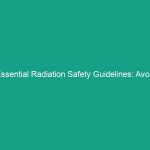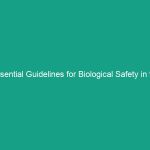Introduction
Good morning team! Today, we’re going to talk about an essential topic that affects all of us in our daily work Environment: poor housekeeping Hazards. Maintaining a clean and organized workplace is not just about aesthetics; it significantly impacts Safety and health. Poor housekeeping can lead to accidents, injuries, and even long-term health issues. Let’s dive into the three types of poor housekeeping Hazards to avoid, ensuring we all work safely and efficiently!
Understanding Poor Housekeeping Hazards
So, what exactly are poor housekeeping hazards? In simple terms, they are risks that arise from a lack of proper cleanliness and organization in the workplace. This can include clutter, spills, and improper storage of materials. These hazards can lead to accidents such as slips, trips, falls, and even equipment damage.
It’s crucial to recognize that poor housekeeping is not just a minor issue; it can have severe implications on our daily operations. Many employees may think that a little mess is harmless, but the reality is that a cluttered workspace can dramatically increase the likelihood of accidents. Let’s break down the key hazards related to poor housekeeping.
Key Hazards, Risks, and Safety Considerations
There are several specific hazards associated with poor housekeeping, and understanding them is the first step in preventing accidents:
- Cluttered Work Areas: Excessive clutter can obstruct pathways and emergency exits, making it difficult to navigate the workspace safely.
- Spills and Debris: Wet floors or debris can lead to slips, trips, and falls, which are among the most common workplace injuries.
- Improper Storage: Storing materials improperly can lead to items falling, causing injuries or damage to equipment.
Ignoring these hazards can lead to serious consequences. For instance, a slip on a wet floor can result in significant injuries that could keep an employee off work for weeks. Moreover, the implications extend beyond physical injuries; they can also lead to decreased morale and productivity within the team.
Best Practices, Procedures, & Actionable Advice
Now that we’ve identified the hazards, let’s discuss some Best Practices to mitigate these risks. Here are some actionable steps you can take:
- Regular Clean-Up: Set aside time daily for cleaning and organizing workspaces. Encourage team members to keep their areas tidy.
- Spill Management: Immediately address any spills. Use appropriate cleaning materials and ensure all employees are trained on spill response Procedures.
- Proper Storage: Organize materials and equipment safely. Use shelving and storage bins to keep items off the floor and secure.
For example, consider a recent incident in a warehouse where a stack of boxes was left unattended. When an employee attempted to retrieve something from the top shelf, the boxes toppled over, leading to injuries. This could have easily been avoided with proper storage practices.
Regulations, Standards, and Compliance
Compliance with safety Regulations is critical in maintaining a safe workplace environment. Familiarize yourself with OSHA Standards that pertain to housekeeping, such as:
- osha Standard 1910.22: General Duty Clause regarding housekeeping.
- OSHA Standard 1910.141: Sanitation requirements for workplace cleanliness.
Staying compliant not only protects you and your coworkers but also shields the company from potential fines and legal issues. Remember, a safe workplace is a productive workplace!
Employee Engagement & Discussion
Now that we’ve covered the essentials, I want to hear from you! What safety challenges have you encountered related to poor housekeeping? Have you ever witnessed an incident that could have been prevented with better practices? Your experiences and insights are invaluable in fostering a culture of safety.
Conclusion & Key Takeaways
In summary, poor housekeeping hazards can significantly impact Workplace Safety. By understanding the key hazards, implementing Best Practices, and complying with safety regulations, we can create a safer and more efficient working environment. Remember, safety is everyone’s responsibility, and your commitment can make a substantial difference.
Thank you all for your attention and dedication to maintaining a safe workplace. Let’s prioritize safety today and every day!


